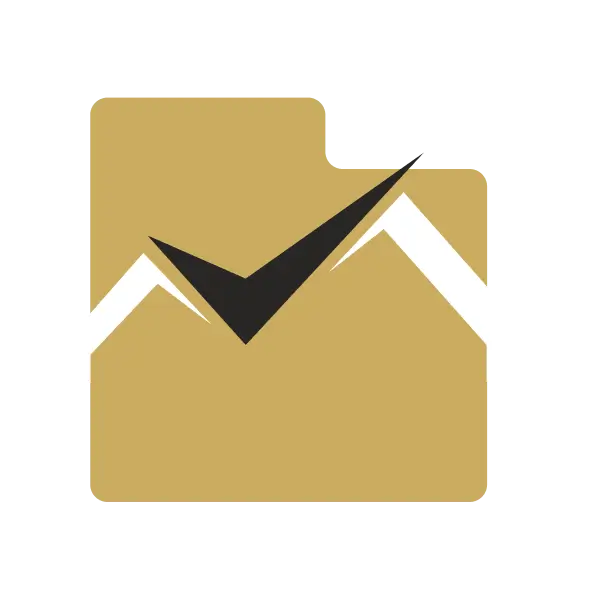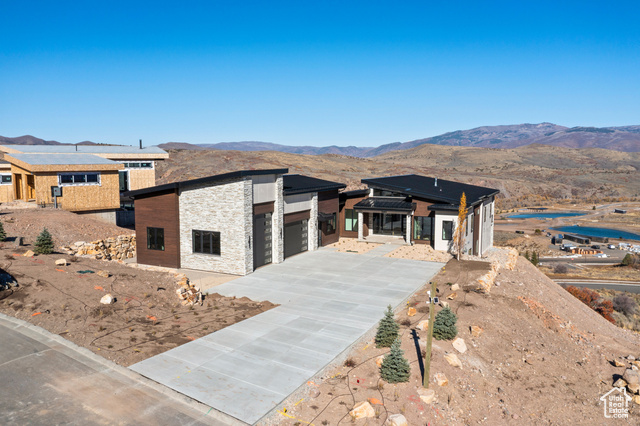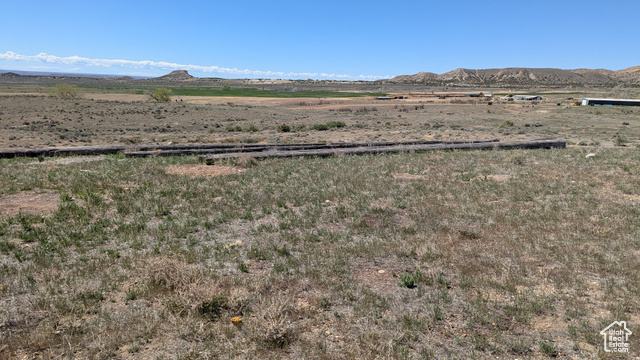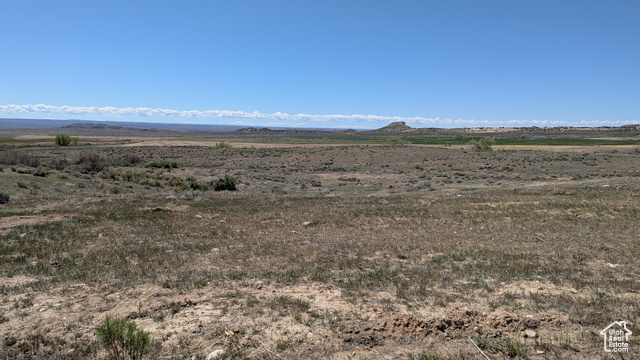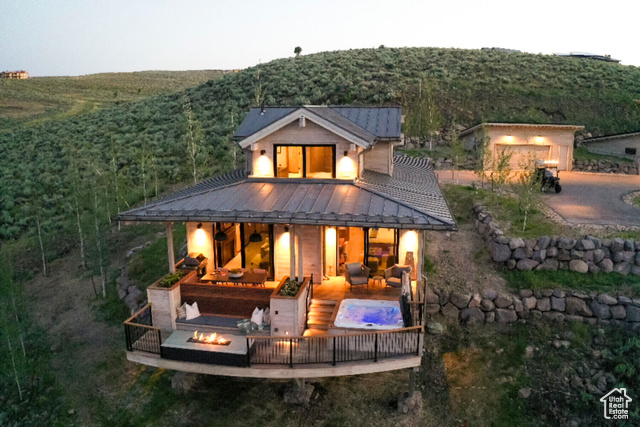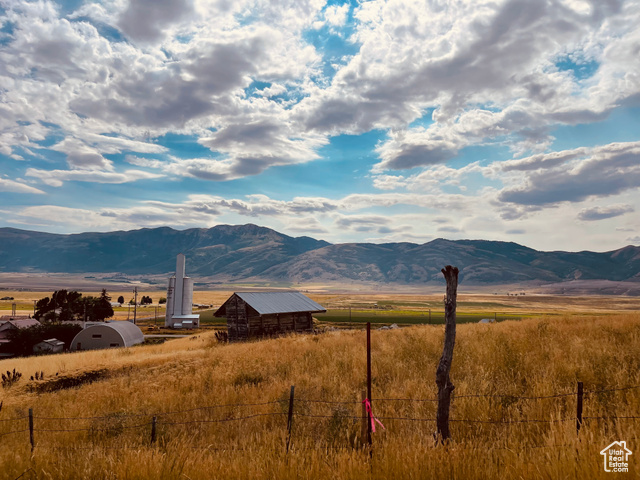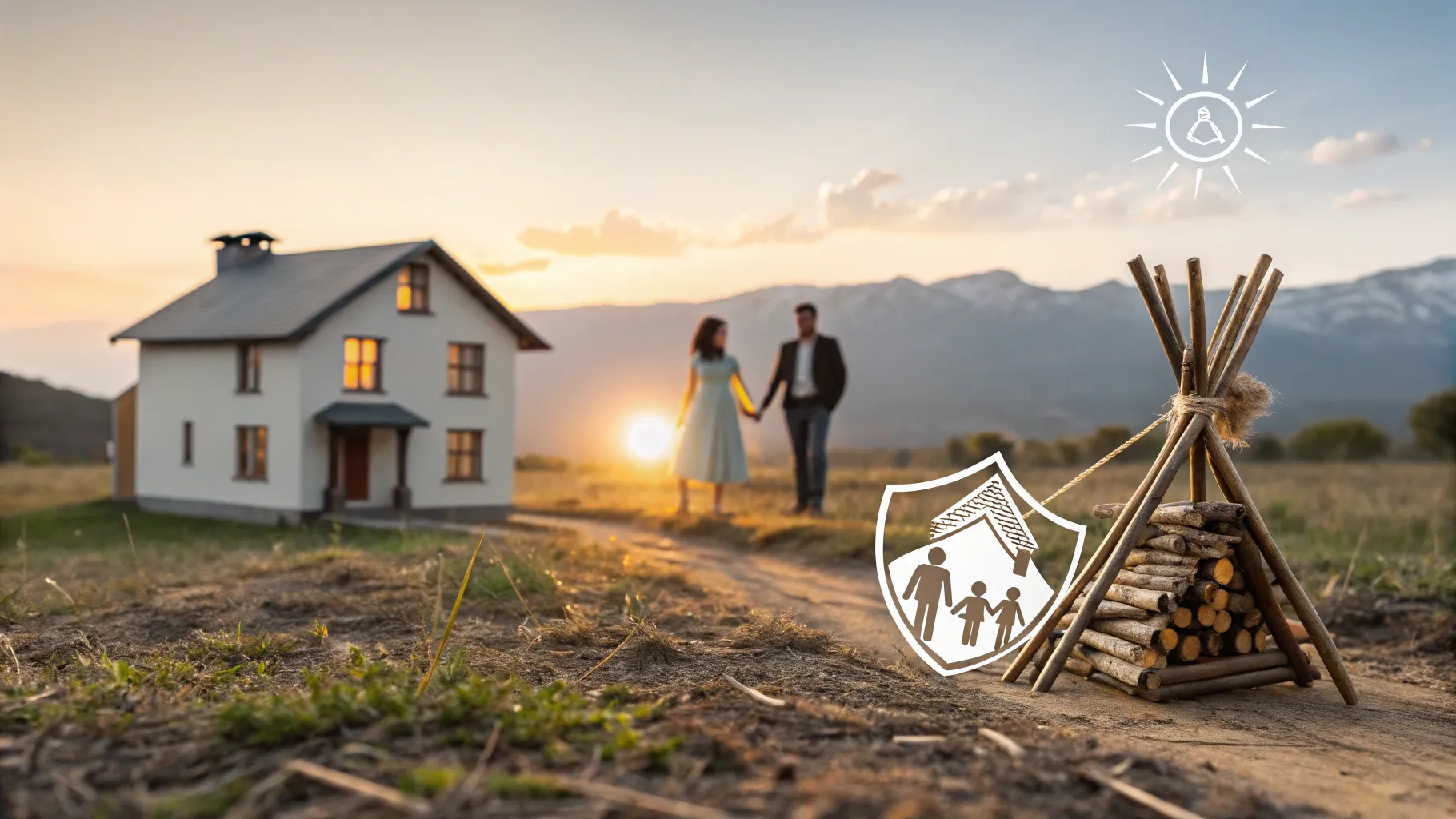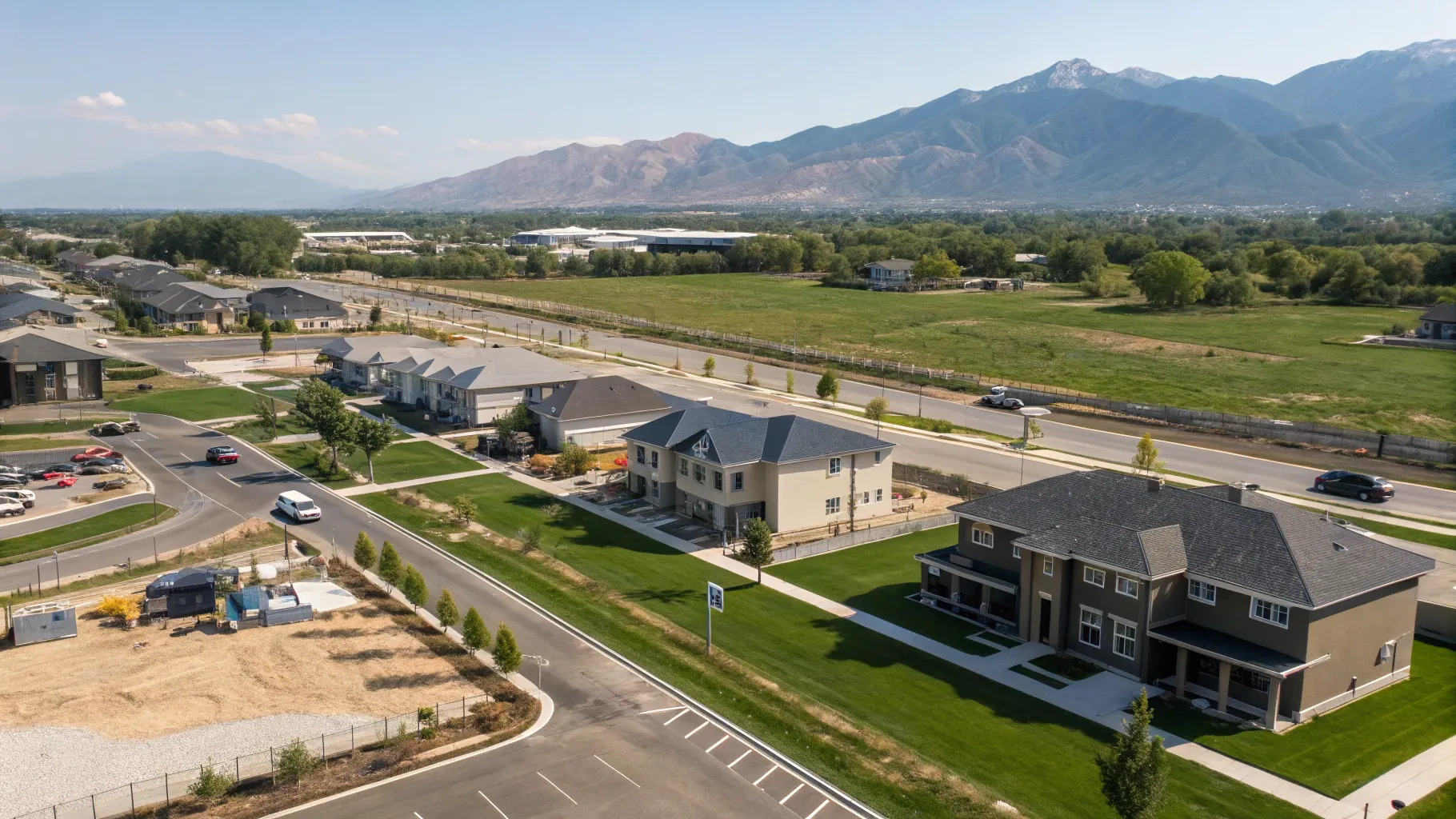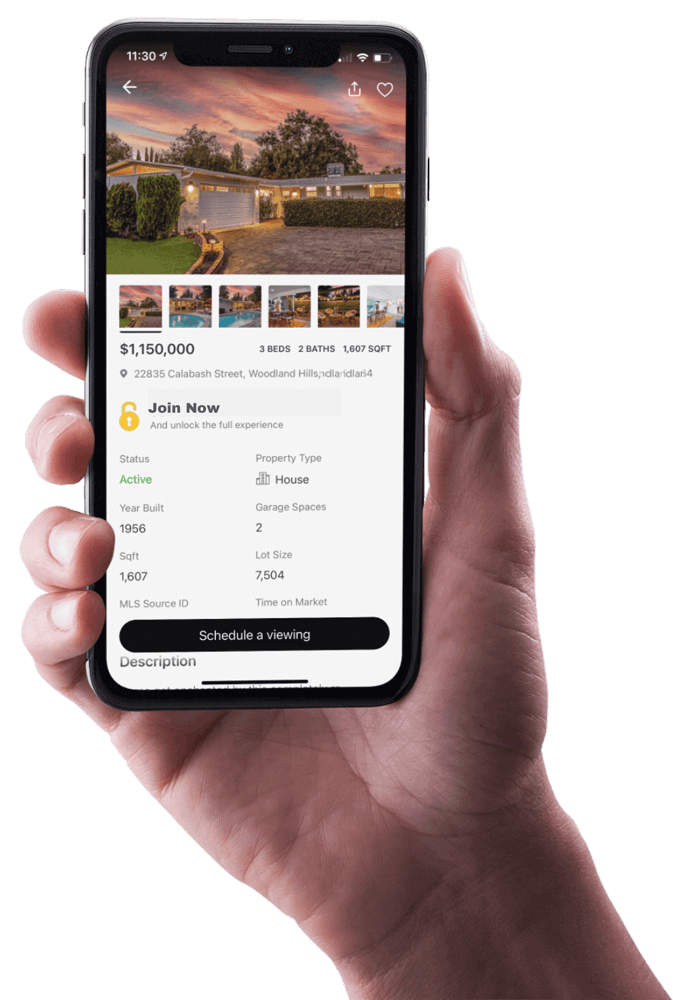Understanding the difference between title and deed is essential for anyone involved in Utah real estate, whether purchasing a starter home in Salt Lake City, investing in a rental property near St. George, or closing on a mountain property in Park City.

Utah's real estate landscape is a study in contrasts: dramatic red rock deserts and towering snow-capped peaks, intimate small towns and expanding urban centers, family-focused communities and high-tech corridors. In the past two decades the state has transformed from a largely overlooked market into one of the nation’s most dynamic regions for relocation, investment, and lifestyle-driven living. Fueled by job growth in technology and other sectors, strong in-migration, and a cultural emphasis on community and family, the map of desirable places to live in Utah has shifted considerably. Each city and neighborhood now occupies a distinct position on a spectrum that ranges from vibrant urban cores to tranquil mountain hideaways and sun-soaked desert retreats.
This long-form guide outlines eight places in Utah that stand out for different reasons—places that suit divergent priorities such as proximity to downtown amenities, mountain solitude, planned community living, resort-style warmth, luxury and privacy, growth and affordability, ski-resort prestige, and an affordable alternative to top-tier resort towns. For each place the discussion covers lifestyle, market characteristics, practical pros and cons, who is most likely to thrive there, and actionable guidance for buyers or investors. The material is written for prospective residents, relocating professionals, families evaluating schools and neighborhoods, retirees seeking climate and amenities, and investors pursuing long-term appreciation.
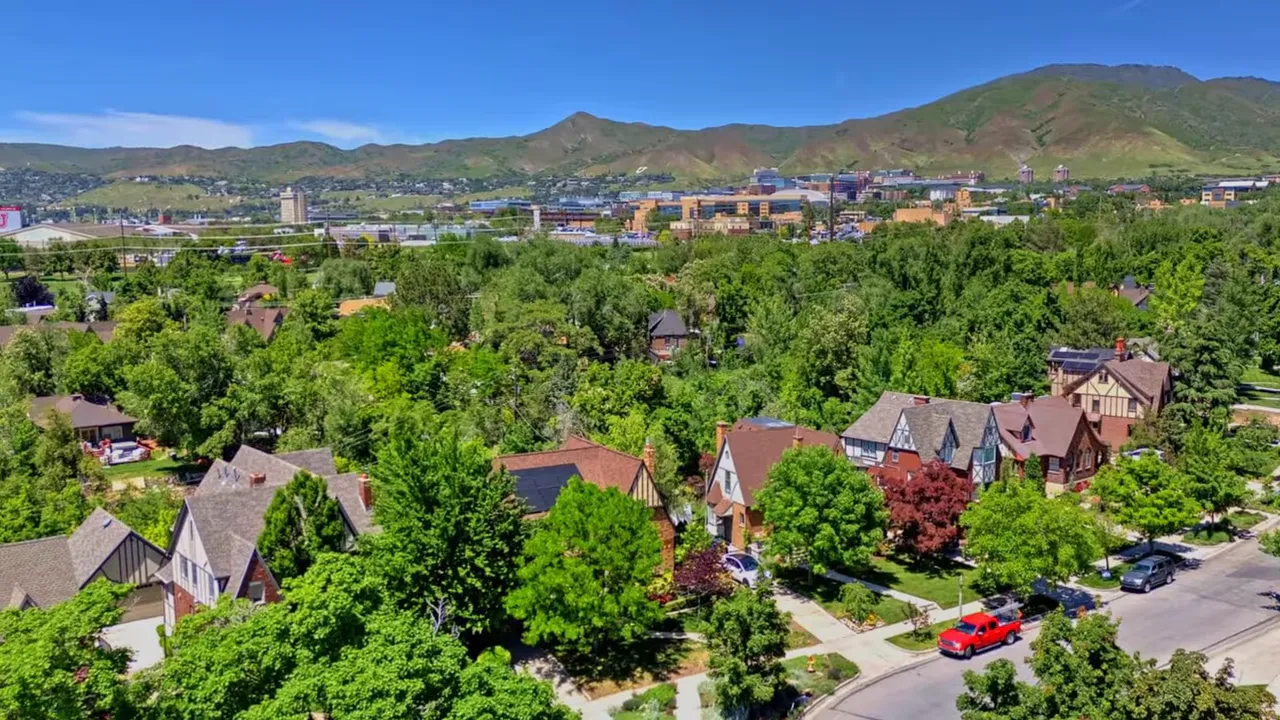
1) Yelkrest, Salt Lake City — City proximity with old-world character
Yelkrest presents a rare combination of historic character, walkability, and immediate access to a downtown core. For someone seeking the benefits of living minutes from downtown Salt Lake City while enjoying a quieter, residential feel, this pocket of tree-lined streets and architecturally distinctive homes is exceptional. Tudor-style residences, English cottages, and manor-like properties give the neighborhood a tangible sense of charm that is difficult to replicate in newer developments.
Market snapshot and cost considerations: Yelkrest commands a premium. The median home price exceeds one million dollars, reflecting scarcity, architectural pedigree, and proximity to downtown amenities. The neighborhood is compact; inventory seldom appears and turns over slowly. For buyers who value character, historic streetscapes, and immediate downtown access, the premium is often worthwhile. For buyers seeking new construction or larger yards at that price point, suburban alternatives will generally offer more square footage and modern finishes for less money.
Lifestyle and amenities: The neighborhood supports a walkable lifestyle. Residents can stroll to neighborhood cafes, local shops, and restaurants in downtown Salt Lake City. The blend of historic homes and mature trees creates a calm residential backdrop that contrasts with urban energy just a short walk or drive away. For families, proximity to cultural venues, parks, and higher education institutions is an added advantage.
Who fits Yelkrest best: Professionals who want a short commute to downtown offices, families seeking a neighborhood with character and walkability, and buyers who prioritize aesthetics and legacy architecture. Yelkrest is less suitable for budget-focused buyers, those who need quick access to large backyards, or households that place absolute priority on new construction.
Buying tips: Buyers should accept that competition for inventory is a recurring reality. Targeted monitoring of listings, readiness to act quickly, and flexible closing timelines increase the chance of securing a home. Inspectors and appraisers familiar with historic construction can be invaluable when evaluating repair needs and long-term maintenance costs.
2) Summit Creek, Woodland Hills — Foothill mountain living without the remote commute
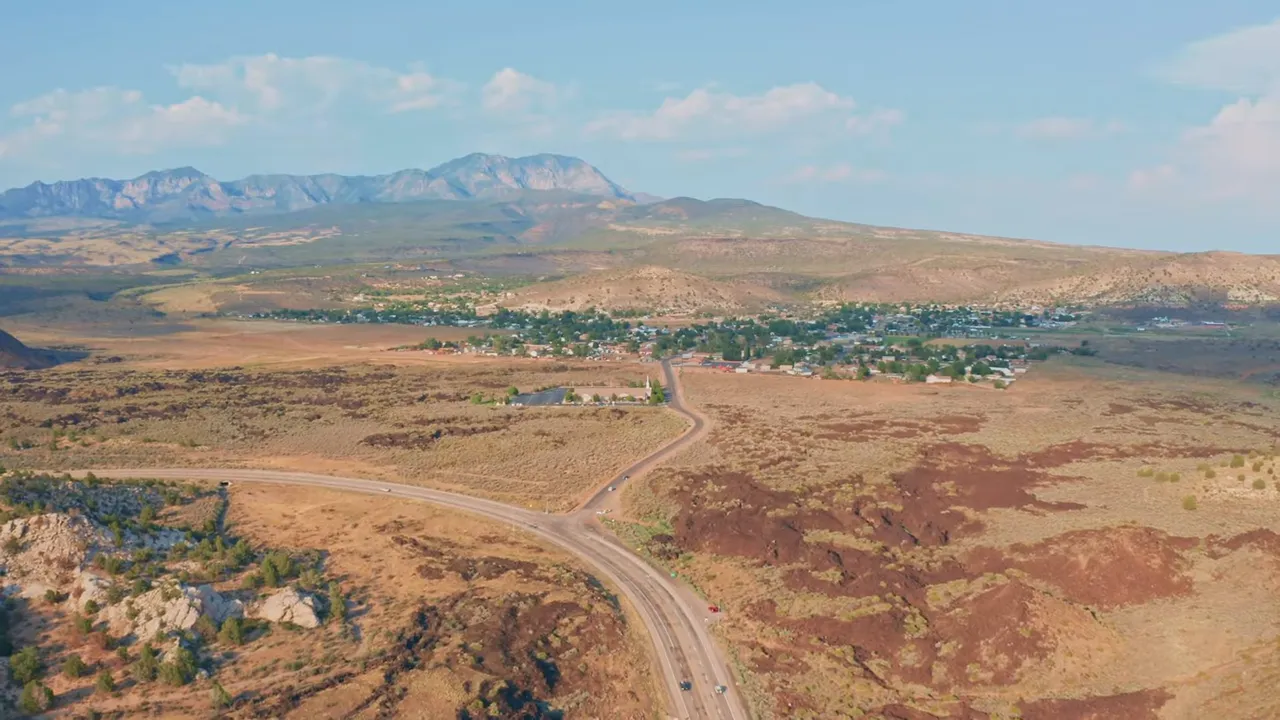
Summit Creek, located just south of Provo in Woodland Hills, is a curated foothill community designed to deliver mountain living sensations while maintaining reasonable access to city amenities. Homes here emphasize modern architecture, glass-walled panoramas, and design-forward floor plans. The neighborhood occupies a sweet spot for buyers who want the feel of living in the mountains without the time-consuming drives and altitude-related complications of high-elevation communities.
Market snapshot and context: The median home price in Summit Creek sits near $1.2 million. Located approximately 20 to 25 minutes from downtown Provo, the community offers dramatic mountain views at an elevation of roughly 5,200 feet—higher than Salt Lake City but not so high as to create the harsher logistical issues associated with remote alpine living. For buyers who prize air quality, vistas, and architectural design, Summit Creek provides a compelling trade-off: mountain ambiance with relatively easy access to urban services.
Lifestyle and amenities: Summit Creek is designed around an intentional, slower pace of life. The community’s architecture and lot orientations often prioritize views and outdoor living. Residents typically enjoy access to hiking, biking, and other Wasatch Front recreational opportunities while being close enough to Provo for shopping, dining, major employers, universities, and cultural amenities. The understated elegance of the homes tends to attract design-focused homeowners and buyers who value scenic privacy.
Who fits Summit Creek best: Professionals and families who want daily access to city jobs and schools but also wish to wake up to sweeping mountain views. Buyers who enjoy a balance of modern construction, privacy, and proximity to recreational trails will find Summit Creek especially appealing. Those who perform seasonal work, require frequent air travel, or prefer flatland living may prefer other areas.
Buying tips: Expect elevated price points and a selective inventory. Because Summit Creek blends luxury construction with mountain-oriented layouts, buyers should evaluate heating, insulation, and mechanical systems for altitude-specific considerations. Proximity to Provo makes this community attractive to those tied to the university or regional employers.
3) Daybreak, South Jordan — Master-planned community with plug-and-play living
Daybreak in South Jordan represents a modern vision of suburban living: highly planned, amenity-rich, and focused on community. Built around a central lake and expansive trail networks, Daybreak emphasizes walkability, integrated housing types, and amenities designed to keep neighborhoods active year-round. The development has evolved over twenty years and remains a long-term project with additional phases still under construction. For buyers seeking a move-in-picture lifestyle in Utah, Daybreak stands out as the definitive plug-and-play option.
Market snapshot and amenities: The median home price in Daybreak is approximately $650,000, though the community includes product across a wide price range, with many homes above $1 million. The community supports a population of roughly 25,000 residents and continues to grow. An HOA fee of about $143 per month, billed quarterly, includes high-speed fiber internet and access to the community’s amenities—an uncommon inclusion in many master-planned communities and a factor that increases perceived value.
Community design and lifestyle: Daybreak is organised around Oaker Lake on the east side and a watercourse on the west side, offering non-motorized boating opportunities such as kayaking and paddle boarding. Soda Row serves as a community hub, hosting summer concerts, farmers markets, and car shows. Downtown Daybreak is in active development and includes a new baseball stadium for the local AAA affiliate, which is anticipated to further stimulate dining, retail, and office development.
Product mix and demographics: A major strength of Daybreak is the integrated housing mix—luxury homes, townhomes, condos, and apartments are blended rather than segregated. This integration contributes to a vibrant street life and diverse neighborhood demographics. Four community swimming pools, miles of trails, and ongoing public events make Daybreak particularly family-friendly and attractive for recent transplants seeking immediate social connection.
Practical considerations and drawbacks: The most commonly cited drawback is narrow streets and constrained on-street parking. Driveway and garage sizes are generally modest, which can create congestion during peak visitor periods and complicate winter snow removal. Prospective buyers should evaluate parking needs, especially for multi-generational households or those expecting frequent visitors. Despite these challenges, the overall value proposition remains compelling due to the collection of amenities, quality schools, and the community feel.
Who fits Daybreak best: Out-of-state relocators and young families seeking an instant community, access to modern amenities, and new construction options. Buyers who prefer a highly managed environment with predictable amenities and social programming will find Daybreak especially appealing. Those seeking large private lots or absolute solitude may prefer more rural or suburban alternatives.
Buying tips: Consider the HOA structure carefully and calculate the bundled value that includes fiber internet and access to pools, trails, and events. Evaluate proximity to the planned downtown and stadium developments, as these will influence property values and neighborhood dynamics over the coming years. For buyers intending to rent, Daybreak’s integrated product mix and family-friendly programming produce strong demand for rentals.
4) St. George — Desert sunshine, resort living, and migration-driven growth
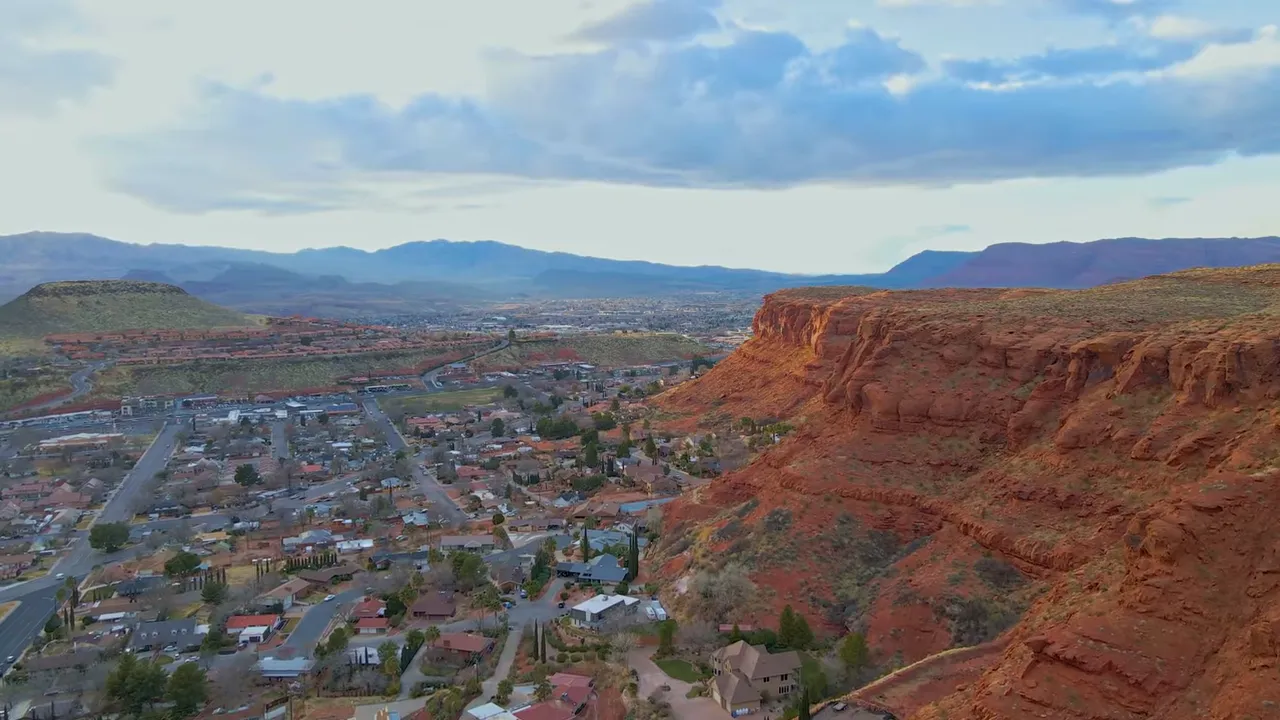
St. George stands apart in Utah as the primary desert destination for those seeking year-round warmth, resort-style amenities, and dramatic southwestern landscapes. It attracts retirees, snowbirds, second-home buyers, and an expanding cohort of remote professionals who appreciate direct access to outdoor recreation and a climate with mild winters. Regional growth patterns indicate St. George will continue to expand significantly as new master-planned communities and commercial development follow residential growth.
Market snapshot and growth dynamics: Median home prices in the St. George area have risen above $600,000, with population growth exceeding 20 percent in the last five years in some metrics. The regional airport offers direct flights to several western hubs, and master-planned communities—most notably Desert Color—are reshaping the suburban fringe with resort-level amenities. Rapid in-migration and ongoing buildout have sustained a seller-favored market in recent years.
Lifestyle and amenities: The climate is a major draw. Average winter temperatures hover in the mid-50s Fahrenheit, allowing an outdoor-centric lifestyle that contrasts with northern Utah’s snowy winters. Golf courses, hiking, biking, and access to nearby national parks and red-rock canyons define the living experience. The growth of master-planned communities brings pools, clubhouses, and tightly curated outdoor spaces, further reinforcing a resort-like character.
Who fits St. George best: Retirees seeking a warm winter climate, remote professionals who no longer need daily commutes to a metro area, and buyers who prioritize outdoor recreation oriented around desert ecosystems. Investors may find long-term appreciation opportunities tied to continued population inflows and second-home demand.
Buying tips: Watch master-planned community buildout schedules closely. Early phases often capture favorable pricing, but infrastructure and commercial amenities lag residential delivery. Verify water and resource plans for new developments and anticipate HOA structures that can vary widely in scope and fees. For buyers reliant on air travel, check local flight connectivity and seasonality.
5) Alpine — Luxury, privacy, and postcard views near the Wasatch
Alpine offers one of the most desirable combinations of privacy, natural beauty, and accessibility along the Wasatch Front. The community feels exclusive, yet remains within practical commuting distance of Salt Lake City and the international airport. This balance of seclusion and convenience makes Alpine a prime choice for high-net-worth buyers seeking estate properties and custom-built homes set against scenic mountain backdrops.
Market snapshot: Median home prices in Alpine exceed $1.6 million. Many buyers are choosing to acquire land or older homes and then construct custom residences that meet contemporary standards for luxury and function. Home sites often provide expansive mountain views and seclusion that justify both the land investment and elevated construction budgets.
Commute and accessibility: Travel time to downtown Salt Lake City and the airport averages around 35 minutes under non-peak traffic conditions. While commutes are manageable, rush hour can extend travel times, so buyer expectations should include some variation based on work schedules. For frequent flyers and business travelers, Alpine provides reasonable access to key transport hubs while maintaining a rural, high-end neighborhood aesthetic.
Lifestyle and amenities: The community preserves a small-city feel with a population just north of 10,000 residents. Amenities tend to be understated rather than ostentatious, with a focus on privacy and landscape preservation. The combination of high-elevation views, nearby recreation, and an ethos of exclusivity makes Alpine a top-tier choice for residential prestige.
Who fits Alpine best: Buyers with a greater tolerance for price and a high priority on privacy, custom construction, and scenic beauty. Developers and custom builders targeting luxury clientele will also find Alpine an attractive market due to continued interest in estate-scale properties.
Buying tips: Land purchases require careful due diligence regarding lot orientation, view corridors, and local building regulations. Utility connections and road access can be cost drivers for custom projects. Prospective buyers should include site-specific surveys and preliminary architecture consultations in early budgeting phases.
6) Firefly, Eagle Mountain — Rapid growth, affordability, and the next suburban frontier
Firefly in Eagle Mountain exemplifies the growth-oriented outer suburbs of the Wasatch Front. Historically farmland, Eagle Mountain has experienced explosive population growth and is now one of the fastest-growing cities in the state. Firefly is conceived as a master-planned community spanning over 3,000 acres and will include thousands of homes, a diversity of housing types, and eventually substantial commercial infrastructure. For buyers who want to get in early on the region’s expansion, Firefly offers a combination of affordability and long-term upside.
Market snapshot and growth dynamics: Median home prices in Eagle Mountain hover around $480,000, with competitive single-family options available in the 500s to low 600s for newer construction. Eagle Mountain has seen population surges—recent figures indicate very strong growth rates—and its current population has grown into the tens of thousands. The location attracts buyers who want larger lots, more house for the money, and room to breathe relative to the tightening lots of inner valley subdivisions.
Location and commute realities: Driving from Interstate 15 into the Firefly area typically adds 40 to 45 minutes compared to central valley locations. For many buyers, the trade-off between commute time and increased square footage, larger yards, and new construction options is worthwhile. Early-adopter buyers should expect residential buildout first, followed by staged introduction of commercial, educational, and civic infrastructure.
Economic catalysts and employment nodes: Several tech and commercial investments are planned or emerging in the broader region, including tech parks and corporate facilities. Nearby expansions by large tech firms are anticipated to expand local employment opportunities and contribute to spillover demand for housing. For buyers considering long-term appreciation, Firefly functions as a near-term bet on continued Silicon Slopes expansion and the westward growth of the Wasatch urban footprint.
Who fits Firefly best: Young families, entry-level buyers seeking larger properties, and investors looking to capture appreciation in early-stage master-planned communities. Those who require immediate, frequent downtown commutes may find the longer travel times less attractive.
Buying tips: Understand phasing and developer incentives. Early phases may offer attractive price points but also require patience as commercial and civic amenities arrive. Ask for trail maps, master plans, and detailed timelines for school construction and commercial delivery. For investors, monitor absorption rates and the developer’s track record for timely infrastructure completion.
7) Park City — World-class resort living and unmatched mountain prestige
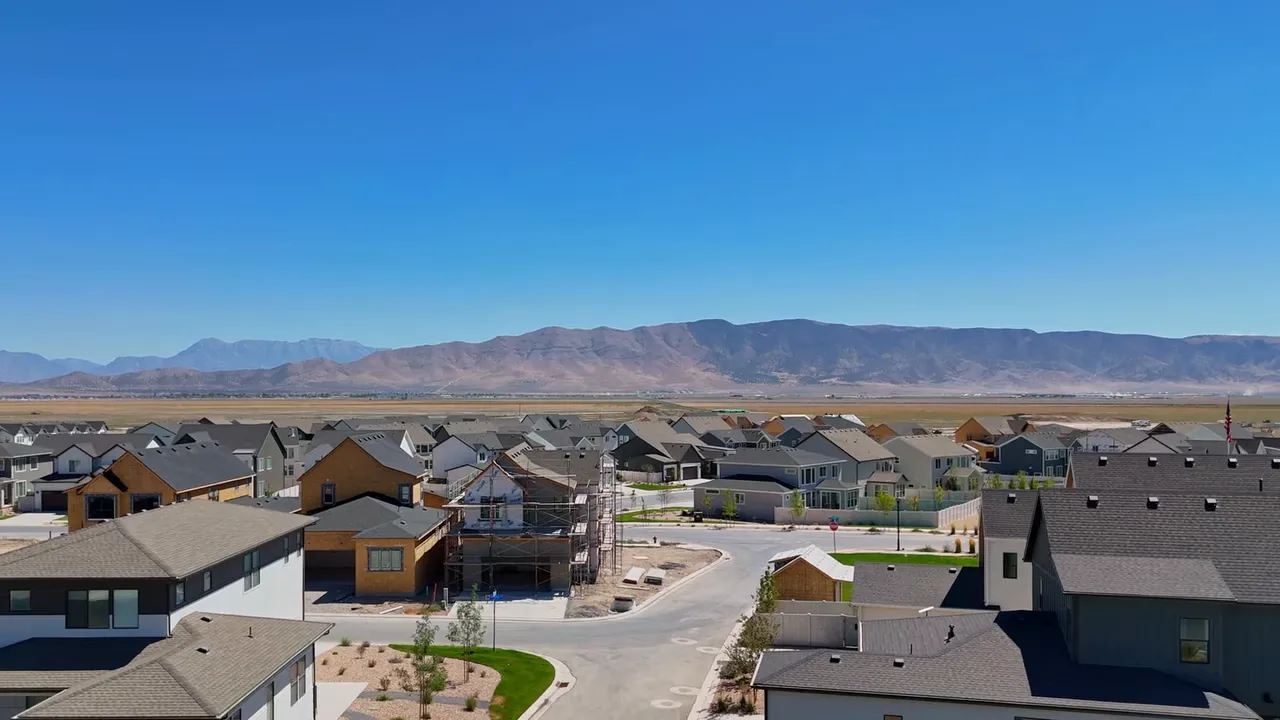
Park City is the state’s preeminent resort town, synonymous with luxury real estate, world-class skiing, and international recognition. For buyers with a flexible or unlimited budget who prioritize ski-in, ski-out access, top-tier resort amenities, and high-end neighborhoods, Park City offers an Aspen or Jackson Hole caliber lifestyle. Park City also benefits from global name recognition generated by events, film festivals, and international visitors.
Market snapshot and product profile: The median home price around Park City nears $2.4 million, and single properties frequently reach into the multi-million-dollar range. The permanent population of Park City is relatively small—approximately 8,500—yet the greater Park City region includes many adjacent neighborhoods and developments experiencing robust growth. Residential product ranges from historic Main Street condos to multi-acre estates and high-end slope-side chalets.
Why Park City remains unique: Park City has a concentration of premium amenities, including multiple ski resorts, globally recognized events, and a robust hospitality infrastructure. Recent development east of Park City on the Deer Valley side reflects ongoing investment activity and large-scale resort planning. High-profile projects—such as a new mountain golf course conceived by major golf brands—add to the area’s prestige and attract buyers seeking both recreation and status.
Who fits Park City best: Buyers prioritizing lifestyle above cost—second-home purchasers, high-net-worth individuals seeking recreational assets, and households wanting the ultimate mountain resort lifestyle. Investors targeting luxury short-term rentals will find opportunities but must navigate strict local regulations on short-term leasing in some neighborhoods.
Buying tips: Expect intense competition for the most desirable ski-adjacent properties. Tax and occupancy rules can influence rental potential, so consult local ordinance details before purchasing for investment purposes. Consider proximity to transit options and seasonality impacts on local service economies.
8) Heber City and Midway — A practical route to Park City lifestyle without the Park City price tag
Heber City and Midway are positioned as attractive alternatives to Park City for buyers seeking a mountain lifestyle with comparatively lower price points. Located 15 to 20 minutes south of Park City, the Heber Valley presents valley-style living with excellent views, fresh air, and a smaller-town vibe while maintaining relatively easy access to the Park City ski scene and resort infrastructure.
Market snapshot and trajectory: Median home prices in Heber Valley have climbed above $800,000, reflecting strong demand and spillover from Park City. Commutes to Park City are manageable—about 20 minutes under normal conditions—so the area is increasingly being recognized for its potential to attract buyers who want access to resort amenities without the Park City cost premium. The Heber Valley also benefits from large buildable tracts that can support new residential subdivisions, amenity development, and commercial services.
Lifestyle and development trends: Heber City and Midway provide a blend of ranch-like homes, planned subdivisions, and increasingly sophisticated retail and dining options. Growth is shaping the eastern corridor and will likely continue as Park City’s market exerts upward pressure on nearby prices. The Heber Valley also supports numerous outdoor activities—fishing, mountain biking, hiking, and winter sports—and serves as a natural conduit for Park City-bound visitors and residents.
Who fits Heber City and Midway best: Buyers seeking a long-term appreciation play tied to Park City’s continued popularity, families desiring a smaller-town community with mountain access, and lifestyle buyers who want proximity to skiing without a Park City-level price tag. Investors should consider rental demand stemming from second-home renters and seasonal visitors.
Buying tips: Research infrastructure timelines and zoning that will influence future neighborhood character. For those considering rentals, verify the status of short-term rental regulation. The Heber Valley is poised for continued absorption of Park City demand, so buyers who time acquisitions judiciously can capture appreciable upside over time.
Comparative considerations: How to choose among these eight places
Choosing a place to live requires clarity about priorities. Several decision points will help narrow the field:
- Primary lifestyle preference — Choose Salt Lake City Yelkrest for near-downtown character; pick Park City for world-class ski and resort living; select St. George for year-round warmth and desert recreation; choose Alpine for luxury and privacy; pursue Daybreak for integrated master-planned suburban living; select Firefly for affordability and long-term suburban growth; consider Summit Creek for mountain ambiance close to Provo; opt for Heber Valley for a practical Park City-adjacent option.
- Budget and price sensitivity — Median price distribution varies widely. Park City and Alpine sit at the high end; Yelkrest is premium relative to its urban scale. Daybreak and Summit Creek occupy mid-to-high spectrums depending on product. Eagle Mountain serves as the most affordable among the featured master-planned areas, with potential for appreciation as infrastructure arrives.
- Commute and job access — Daily commute realities matter. Salt Lake City neighborhoods and Alpine offer the most direct access to major job centers. Firefly and parts of Eagle Mountain add travel time but compensate with larger lots and new home value. St. George and Heber Valley are best for remote workers or those whose employment centers align with the respective regions.
- Schooling and family services — Elementary through high school quality and proximity should be assessed on a neighborhood-by-neighborhood basis. Daybreak is notable for top-tier schools and family-focused amenities. Heber Valley and Alpine are attractive for family-oriented buyers seeking strong local school systems and community programs.
- Investment horizons — Buyers considering appreciation should evaluate projected infrastructure and corporate investments. Firefly and Eagle Mountain may deliver strong appreciation tied to regional tech expansion. St. George and Heber Valley benefit from high demand driven by climate and resort proximity. Park City remains a strong store of value for luxury and second-home markets.
Practical checklist for buyers moving to Utah in 2026
- Clarify primary priorities: job location, schools, climate preference, lifestyle amenities, and budget.
- Build a geography-based shortlist: one inner-urban option, one foothill or mountain option, and one suburban/master-planned option for comparison.
- Engage local property professionals and request up-to-date community maps, lot inventories, HOA rules, and covenants for targeted neighborhoods.
- Plan visits across seasons. Utah’s winter and summer conditions reveal different aspects of each community such as snow clearing, road conditions, and seasonal social programming.
- Analyze total cost of ownership: taxes, HOA fees, utilities, winter maintenance, and commuting costs.
- When considering master-planned communities, confirm phased amenity delivery dates and school buildout plans.
- For investors, examine rental rules and short-term rental restrictions before assuming vacation-rental income potential.
Neighborhoods and market data sources
Reliable governmental and industry resources help validate local trends and make informed decisions. For statewide data and policy information consult https://utah.gov. For demographic and economic profiles reference https://www.census.gov. Local market intelligence and brokerage listing platforms complement these resources by offering up-to-date inventory and pricing snapshots.
Final recommendations and strategic moves
Relocating to Utah in 2026 requires clear priorities and a willingness to weigh trade-offs. For buyers prioritizing immediate proximity to downtown life and curated neighborhood character, Yelkrest offers walkable streets, historic architecture, and a premium urban experience. For those craving daily mountain vistas without extreme elevation or remote commutes, Summit Creek provides thoughtfully designed mountain living near Provo. Daybreak is the quintessential answer for families and relocators seeking a fully amenitized master-planned setting with social programming built in. St. George serves buyers who prioritize warm winters and resort-style desert living. Alpine is the place for privacy and luxury. Firefly in Eagle Mountain represents the fastest-growing entry point with affordability and future appreciation potential. Park City delivers world-class ski and resort living, and the Heber Valley provides a pragmatic route to much of Park City’s lifestyle at a lower entry price point.
Each community described here fits a distinct reason to relocate: proximity and character, mountain immersion, master-planned suburban living, desert warmth, luxury and seclusion, growth and affordability, high-end resort prestige, and Park City-adjacent value. Prospective buyers should assemble a shortlist that aligns with top priorities, then evaluate neighborhoods across seasons, examining local schools, commute impacts, HOA rules, and infrastructure timelines.
For families, the most important factors often include school quality, safe streets, and access to parks and recreation. For young professionals, commute times, job proximity, and lifestyle amenities matter most. For retirees and snowbirds, climate and access to medical and leisure amenities are decisive. For investors, long-term appreciation hinges on underlying employment growth, infrastructure commitments, and demographic trends.
Utah offers multiple lifestyles within one state. Matching lifestyle preferences to the neighborhoods described here will yield the best outcomes, whether the goal is daily access to the city, a close-to-the-mountains sanctuary, or a warm, year-round desert retreat. Careful due diligence, timing, and an informed strategy will help buyers capture the value and lifestyle that each of these eight places uniquely provides.
Additional resources and next steps: consult statewide and demographic sources at https://utah.gov and https://www.census.gov and leverage local listing portals and community resources to validate current inventory and development plans. Consider visiting shortlisted neighborhoods multiple times across different seasons to experience the full scope of living dynamics before making a final decision.
Frequently Asked Questions
Which Utah community offers the best value for buyers seeking a combination of space and affordability?
Communities on the outer fringe of the Wasatch Front, such as Eagle Mountain and other rapidly growing suburbs, provide substantially more space and new-construction home value per dollar compared to inner-valley neighborhoods. These areas offer larger lots and newer homes for lower median prices, though buyers must factor in longer commute times and phased amenity delivery. Firefly in Eagle Mountain is a notable example of a master-planned community that delivers early pricing advantages with anticipated long-term infrastructure improvements.
Is Daybreak a good long-term investment or primarily a lifestyle buy?
Daybreak balances lifestyle amenities with long-term investment potential. Its integrated product mix, ongoing development of a downtown district, and high-quality schools make it attractive for families and buyers seeking community programming. From an investment perspective, the scarcity of comparable master-planned developments in the region and consistent demand for amenity-rich neighborhoods support favorable long-term prospects, though individual returns depend on timing, product type, and broader market cycles.
What are the commuting realities for Alpine and Park City residents who work in Salt Lake City?
Alpine offers reasonable access to downtown Salt Lake City and the international airport, usually around 35 minutes under non-peak conditions. Commuters should plan for longer travel during rush hours. Park City is farther from downtown Salt Lake City and the commute can range from 35 minutes to over an hour depending on traffic and road conditions. Many Park City residents work locally in tourism or run remote businesses, while others accept longer commutes in exchange for resort living.
How should buyers evaluate new master-planned communities in Utah?
When evaluating master-planned communities, buyers should request the master plan, infrastructure schedules, amenity delivery timelines, and phased build maps. Confirm school district commitments and transportation improvements. Review HOA documents carefully to understand maintenance responsibilities and fee escalations. Assess nearby commercial development timing to anticipate when retail, dining, and employment centers will emerge. Finally, speak with current residents in adjacent developments to learn about day-to-day living realities during buildout phases.
